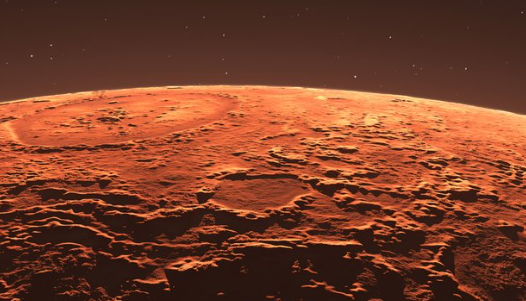The question of whether there is life on Mars has intrigued scientists and the public alike for decades. NASA has spent over $5 billion deploying two sophisticated robotic rovers—Curiosity and Perseverance—to the Martian surface, specifically to search for evidence of past microbial life.
NASA Reports The Perseverance Rover May Have Found Evidence Of Past Life On Mars
Details & photo here: https://t.co/Ky9fYUOy4Jhttps://t.co/Ky9fYUOy4J
— Brotips (@brotips) August 5, 2024
Now, one of those rovers, Perseverance, may have discovered one of the most compelling pieces of evidence yet. Located on an arrowhead-shaped, three-foot-long rock nicknamed “Cheyava Falls” in the Jezero Crater, this discovery is based on a combination of three significant data points suggesting past microbial life. The rock features two vertical veins of calcium sulfate, likely formed from ancient water, flanking a red band of rock filled with “leopard spots.”
NASA has found evidence of past water on Mars before, but the significance of this discovery lies in the narrow band of rock. Using its SHERLOC (Scanning Habitable Environments with Raman & Luminescence for Organics & Chemicals) and PIXL (Planetary Instrument for X-Ray Lithochemistry) instruments, Perseverance detected organic compounds within the rock. The “leopard spots” indicate chemical reactions that could have provided energy to ancient microbial life.
“NASA’s Perseverance rover may have discovered evidence of past life on Mars, after spotting a strange, speckled rock with signs of chemistry that could have supported ancient microbes.” https://t.co/zG7GirJFiJ
— The Daily Seeker (@TheDailySeeker) July 31, 2024
The combination of these findings—the presence of water, organic compounds, and chemical reactions in one location—is unprecedented, making the geological chemistry of Cheyava Falls potentially the best clue yet that Mars once hosted life.
“Cheyava Falls is the most puzzling, complex, and potentially important rock yet investigated by Perseverance,” said Ken Farley, Perseverance project scientist from Caltech, in a NASA press statement. “We have our first compelling detection of organic material, distinctive colorful spots indicative of chemical reactions that microbial life could use as an energy source, and clear evidence that water—necessary for life—once passed through the rock.”
This discovery follows another significant find earlier this year when scientists analyzing a 2017 soil sample from Curiosity’s mission in Gale Crater found an abundance of manganese, which typically requires oxygen and microbes to form. However, these findings come with caveats, such as insufficient knowledge about Mars’ oxidation processes to confirm the existence of microbes.
An intriguing aspect of the Cheyava Falls rock is the presence of millimeter-sized olivine crystals, a mineral that forms from magma. This raises questions about whether past volcanic activity could explain the geological phenomena without the presence of microbes.
“We have zapped that rock with lasers and X-rays and imaged it literally day and night from just about every angle imaginable,” Farley said. “Scientifically, Perseverance has nothing more to give. To fully understand what really happened in that Martian river valley at Jezero Crater billions of years ago, we’d want to bring the Cheyava Falls sample back to Earth, so it can be studied with the powerful instruments available in laboratories.”
#NASA‘s Perseverance rover is uncovering Mars’ secrets by studying sedimentary rocks in Jezero Crater. These ancient formations may hold clues to past life on the Red Planet! 🌌🔍 #Mars #Perseverance #SpaceExploration #Astrobiology pic.twitter.com/uC3epFySqz
— Space Excited (@SpaceExcited) July 31, 2024
Unlike its sister rover, Curiosity, Perseverance does not have an onboard lab, as it was designed to collect samples for retrieval by a future mission. However, with the costs of such a mission potentially reaching $11 billion, bringing back these samples for further study remains uncertain, along with the possibility of definitively understanding if there was once microbial life on Mars.
Key Points:
i. Discovery in Jezero Crater: Perseverance rover has found significant evidence in a rock formation called “Cheyava Falls” in the Jezero Crater, suggesting past microbial life on Mars.
ii. Three Key Indicators: The rock contains vertical veins of calcium sulfate from past water, organic compounds, and “leopard spots” indicating chemical reactions that could have supported microbial life.
iii. Unprecedented Combination: This is the first time NASA has found water, organic compounds, and chemical reaction evidence all in one location, making it a compelling site for past life.
iv. Scientific Enthusiasm: Ken Farley, a Perseverance project scientist, emphasized the rock’s importance, highlighting the first compelling detection of organic material and evidence of water necessary for life.
v. Future Research Plans: To fully understand the findings, NASA aims to bring the Cheyava Falls sample back to Earth for detailed study, though the mission cost of $11 billion poses challenges.
Kirk Volo – Reprinted with permission of Whatfinger News

